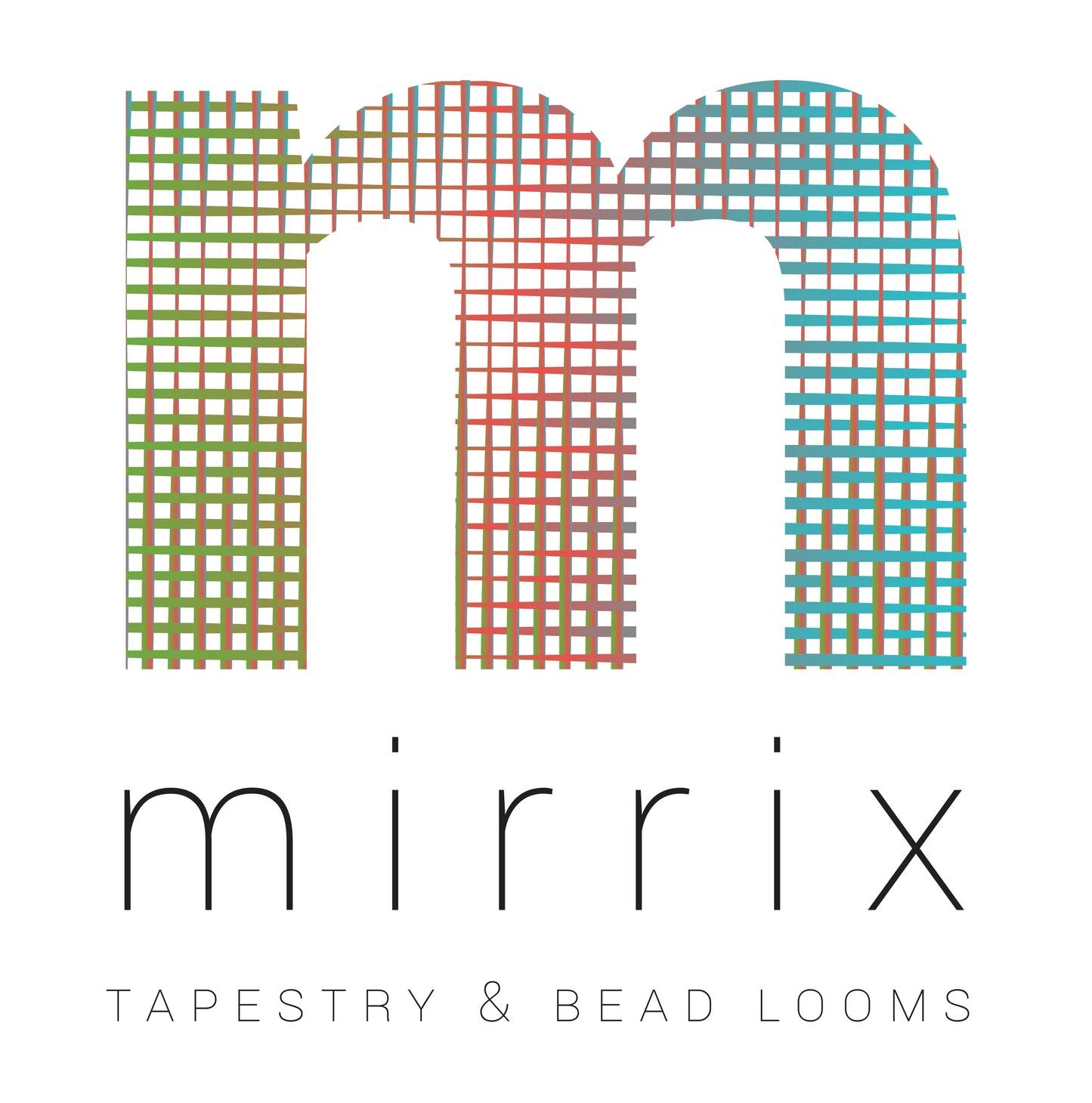One of the most appealing aspects of weaving for me is working with color and texture no matter what I’m planning to make. Claudia’s hand-painted ribbon is exceptional! The colors are vibrant, luxurious, astounding. Just one bobbin of the ribbon has a multitude of colors in it. The ribbon shines and is almost transparent.
So, what to make? As Claudia has stated, weaving strips of this is so satisfying you could do it all day. But, in the end, there has to be more. However, this silk is delicate so you need a gentle hand when working with it and that needs to factor into the end product as well.
For my first attempt, I warped my 12" Little Guy Loom with 4 separate warp strips. My intent was to have spaces in between the colors and have an open weave “window” effect I’d stretch on a fabric covered board. I soon found out the spaces didn’t want to stay in place and it was too loose to give the effect I was after, so unwove it and started over.
This time I used my 8" Lani Loom and just warped up a piece 8 warps wide using my 15 dent coil and irregularly spacing the warps so they were about 8-9 threads per inch. On the bottom, I wove in a few scraps of tag board to space the warps out and give me about 2 inches of wrap to tie later if I wanted fringe. I ended up knotting both ends off and hiding the knots in a hem on each side for this piece but like the fringe option for future ideas.


The picture below shows a long wooden needle I used to weave this piece. I collect almost anything antique related to weaving and this needle is wonderful because it can pack your weft down as well as carry it like a shuttle. However, a tapestry needle works just as well.
I used about 4 or 5 different colored ribbons in the weft, though the changes are relatively subtle intentionally. Truthfully, this ribbon is so gorgeous one color of weft would’ve been as good of a choice. When starting a new weft thread, I tied it to the previous color. This is not the way I usually weave but the silk is very slippery and I knew the knots would be hidden when I made it into a necklace. I’m still thinking of a nicer way to do that step.
You need a gentle hand when weaving with this silk if you want to take full advantage of the rich color changes in the warp and the weft. It’s so relaxing and quick to weave!
This strip ended up being about 19 inches long. I tied off all of the ends with tight square knots and hemmed each end into a crude point rolling the knots into the hem. Again, this isn’t the prettiest of hems but I planned on anchoring the piece to the cord by this hem and knew it would mold into shape knots and all.
I had some soft cotton cord left over from some long forgotten project and wrapped it in silk ribbon for the necklace cord. This slips but the cotton sort of holds it in place. This silk is so elegant it needed a silk cord. I finished the cord with metal cones and a clasp. I also make jewelry so this was easy for me and I had lots of options in my jewelry stash.
My intent was to have this ribbon irregularly curl and coil around the cord. I pinned the cord at the middle point and also where I wanted it to end on each side. These pins helped me while I worked as a gauge for stopping. Also, I hung the cord on a jewelry display form and this really helped it not flip around as I worked.
Using sewing thread and a thin sharp needle, I knotted the thread to the cord at the midpoint and gradually draped the weaving around the cord, tacking it in place as I went along. When I needed to move to an area where the cord was exposed, I ran the needle through the cord to the next spot. It’s more intuitive for me to design asymmetrically but it is difficult to get one side to properly balance the other.

I had some beads picked out for embellishment but felt that the motto “less is more” was a good one to highlight the silk.
I love to make fiber jewelry and feel this ribbon has tons of possibilities. It’s time for me to start another one
Want some hand-painted silk ribbon of your own? Click here to see all the colors we have available right now!












